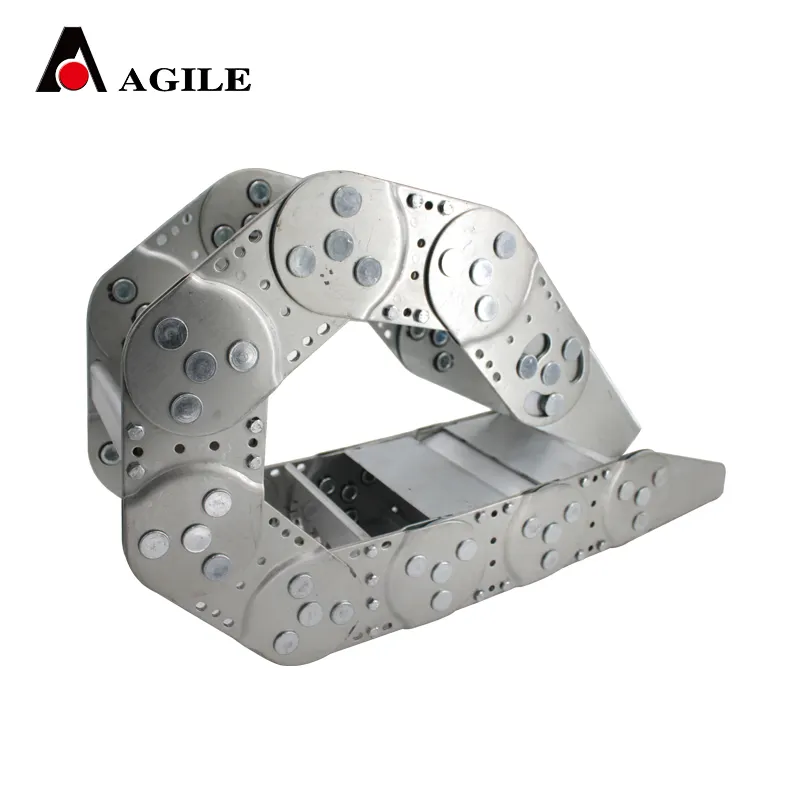drag chain size chart
Understanding Drag Chain Size Charts
In the world of industrial machinery and automation, drag chains are pivotal components that help manage and protect cables and hoses. Companies that manufacture drag chains provide size charts that help engineers and technicians select the appropriate chain for their specific applications. Understanding drag chain size charts is essential for ensuring smooth operations, reducing wear and tear, and achieving optimal system performance. In this article, we will delve into the elements of a drag chain size chart, its significance, and how to use it effectively.
What Are Drag Chains?
Drag chains, also known as energy chains, are flexible conduits designed to carry and guide moving cables and hoses. You can find drag chains in various applications, including CNC machines, robots, conveyor systems, and more. Their primary purpose is to prevent tangling, wear, and damage to the cables and hoses as they move through dynamic environments. The correct size of a drag chain is crucial to ensuring that it can accommodate the necessary components while allowing for movement without restriction.
Components of a Drag Chain Size Chart
A drag chain size chart typically includes various parameters that help users choose the best chain for their application. Here are some common elements you will find
1. Chain Pitch This refers to the distance between the centers of two adjacent links in the chain. Chain pitch is fundamental in determining how much cable or hose the chain can support, as well as its flexibility.
2. Inner Width This measurement is crucial in identifying how much space is available for cables and hoses within the drag chain. A wider inner width may accommodate more cables, whereas a narrower width is suited for fewer or smaller cables.
3. Outer Width Although less critical than inner width, outer width influences the overall footprint of the drag chain in the machinery. It’s important to consider this measurement when installing the drag chain in confined spaces.
drag chain size chart

4. Height The overall height of the drag chain affects its load capacity and the stability of the cables inside. Taller chains may offer more room but could also be prone to swaying if not supported correctly.
5. Bending Radius The bending radius is the minimum radius at which a drag chain can bend without damaging the cables and hoses inside. Choosing a chain with an appropriate bending radius is vital, especially in applications where space is limited and tight turns are required.
6. Load Capacity This parameter specifies the maximum weight the drag chain can safely support. It is crucial to select a chain that meets or exceeds the weight of the cables and hoses it will carry.
7. Material Drag chains can be made from various materials including plastic, metal, or mixed materials. The material affects durability, weight, cost, and resistance to environmental factors such as temperature or chemicals.
How to Use the Size Chart
When using a drag chain size chart, start by identifying the specifications of the cables or hoses you need to protect. Measure the outer diameter and count the number of cables to determine the required inner width and load capacity. Consult the bending radius to ensure the chain will fit your design without excessive wear.
After gathering these specifications, compare them against the options listed on the size chart. Choose a drag chain that meets or exceeds all your criteria, ensuring a perfect fit for your system.
Conclusion
Selecting the right drag chain is crucial to the efficiency and lifespan of your machinery. By understanding drag chain size charts and their components, engineers and technicians can make informed decisions that enhance the functionality of their systems. Proper selection not only minimizes downtime and maintenance costs but also maximizes productivity in industrial settings. Whether you're designing a new system or upgrading existing equipment, consulting a drag chain size chart is an essential step in the process.








